Ο Steve Jobs δεν συμμετέχει συχνά στις ανακοινώσεις των οικονομικών αποτελεσμάτων ωστόσο το φετινό ρεκόρ των $20.34 δις δεν θα μπορούσε να μείνει ασχολίαστο από τον CEO της Apple.
Εκτός όμως από τα εντυπωσιακά νούμερα τα οποία δημοσιεύσαμε εχτές (βλ. Apple Q4 2010 Οικονομικά Αποτελέσματα) ο Jobs αναφέρθηκε και στον ανταγωνισμό (RIM – BlackBerry, Google – Android) και τα σημαντικά χαρακτηριστικά που τον διαφοροποιούν την Apple.
Στα “Best Of” της ομιλίας περιλαμβάνονται:
- Το App store της Apple διαθέτει πλέον 300.000 εφαρμογές
- 275.000 activations/ημέρα για το iOS έναντι 200.000 Android activations/ημέρα
- Αναφορές στην γνωστή καραμέλα που πιπιλίζεται το τελευταίο χρόνο σχετικά με το πόσο “ανοιχτό” είναι το Android και το πόσο “κλειστό” είναι το iOS
- Αναφορές στο fragmentation του Αndroid με τα πολλές δεκάδες διαφορετικά version του λειτουργικού και τις 244 διαφορετικές συσκευές που πρέπει να υποστηριχτούν από τους developers
- 4 διαφορετικά App stores για το Android (Google, Amazon, Verizon και Vodafone) τα οποία δυσχαιρένουν ακόμα περισσότερο τη διανομή εφαρμογών από τους developers
- Αναφορές σε ανταγωνιστικά tablets και οι λόγοι για τους οποίους δεν θα κυκλοφορήσει iPad 7 ιντσών
- Σχόλια επάνω στα 7ιντσα ανταγωνιστικά tablets σχετικά με το μέγεθος της οθόνης τους και γιατί αναμένεται να αποτύχουν πριν ακόμα κυκλοφορήσουν (πολύ μεγάλα για να ανταγωνιστούν τα smartphones και πολύ μικρά για να ανταγωνιστούν το iPad)
- Αναφορές στα ανταγωνιστικά tablets τα οποία χρησιμοποιούν το Android Froyo. Ένα λειτουργικό το οποίο η Google δεν συστήνει για tablets και ενώ η ίδια έχει ενημέρωσει τους κατασκευαστές να περιμένουν μία ειδική έκδοση του Android για tablets, τον επόμενο χρόνο
- Αναφορές στην τιμή διάθεσης του iPad και γιατί ο ανταγωνισμός δεν μπορεί να διαθέσει tablets με αυτά τα χαρακτηριστικά σε αυτές τις τιμές (Η Apple διαθέτει το δικό της επεξεργαστή A4, το δικό της software, δικιά της τεχνολογία στην ανάπτυξη μπαταριών κτλ).
Ακολουθεί ολόκληρο το κείμενο της ομιλίας όπως το δημοσίσευσε το Μacworld:
Hi, everybody. As most of you know, I don’t usually participate in Apple earnings calls, since you’re all in such capable hands with Peter and Tim. But I just couldn’t help dropping by for our first 20-billion-dollar quarter. I’d like to chat about a few things, and then stay for the rest of the Q&A, if that’s all right.
First, let me discuss iPhone. We sold 14.1 million iPhones in the quarter, which represents a 91 percent unit growth over the year-ago quarter, and was well ahead of IDC’s latest published estimate of 64 percent growth for the global smartphone market in the September quarter. And it handily beats RIM’s 12.1 million BlackBerrys sold, in their most recent quarter ending in August.
We’ve now passed RIM. And I don’t see them catching up with us in the foreseeable future. They must move beyond their area of strength and comfort, into the unfamiliar territory of trying to become a software platform company. I think it’s going to be a challenge for them to create a competitive platform and to convince developers to create apps for yet a third software platform after iOS and Android. With 300,000 apps on Apple’s App Store, RIM has a high mountain ahead of them to climb.
But what about Google? Last week, Eric Schmidt reiterated that they are activating 200,000 Android devices per day, and have around 90,000 apps in their app store. For comparison, Apple has activated around 275,000 iOS devices per day on average for the past 30 days, with a peak of almost 300,000 iOS devices per day on a few of those days. And Apple has 300,000 apps on its App Store.
Unfortunately, there is no solid data on how many Android phones are shipped each quarter. We hope that manufacturers will soon start reporting the number of Android handsets they ship each quarter, but today that just isn’t the case. Gartner reported that about 10 million Android phones were shipped in the June quarter, and we await to see if iPhone or Android was the winner in this most recent quarter.Google loves to characterize Android as “open,” and iOS and iPhone as “closed”. We find this a bit disingenuous, and clouding the real difference between our two approaches. The first thing most of us think about when we hear the word “open” is Windows, which is available on a variety of devices. Unlike Windows, however, where most PCs have the same user interface and run the same apps, Android is very fragmented. Many Android OEMs, including the two largest, HTC and Motorola, install proprietary user interfaces to differentiate themselves from the commodity Android experience. The user’s left to figure it all out. Compare this with iPhone, where every handset works the same.
Twitter client [TweetDeck] recently launched their app for Android. They reported that they had to contend with more than a hundred different versions of Android software on 244 different handsets. The multiple hardware and software iterations present developers with a daunting challenge. Many Android apps work only on selected Android handsets, running selected Android versions. And this is for handsets that have been shipped less than 12 months ago! Compare this with iPhone, where there are two versions of the software, the current and the most recent predecessor, to test against.
In addition to Google’s own app marketplace, Amazon, Verizon, and Vodafone have all announced that they are creating their own app stores for Android. So there will be at least four app stores on Android, which customers must search among to find the app they want, and developers will need to work with to distribute their apps and get paid. This is gonna be a mess for both users and developers.
Contrast this with Apple’s integrated App Store, which offers users the easiest-to-use largest app store in the world, preloaded on every iPhone. Apple’s app store has over three times as many apps as Google’s marketplace, and offers developers one-stop shopping to get their apps to market easily, and get paid swiftly.
You know, even if Google were right, and the real issue is “closed” versus “open” it is worthwhile to remember that open systems don’t always win. Take Microsoft’s “Plays For Sure” music strategy, which used the PC model—which Android uses as well—of separating the software components from the hardware components. Even Microsoft finally abandoned this “open” strategy in favor of copying Apple’s integrated approach with their Zune player, unfortunately leaving their OEMs empty-handed in the process. Google flirted with this integrated approach with their Nexus One phone.
In reality, we think the open versus closed argument is just a smokescreen to try and hide the real issue, which is, “What’s best for the customer – fragmented versus integrated?” We think Android is very, very fragmented, and becoming more fragmented by the day. And as you know, Apple strives for the integrated model so that the user isn’t forced to be the systems integrator. We see tremendous value at having Apple, rather than our users, be the systems integrator. We think this a huge strength of our approach compared to Google’s: when selling the users who want their devices to just work, we believe that integrated will trump fragmented every time.
And we also think that our developers could be more innovative if they can target a singular platform, rather than a hundred variants. They can put their time into innovative new features, rather than testing on hundreds of different handsets. So we are very committed to the integrated approach, no matter how many times Google tries to characterize it as “closed.” And we are confident that it will triumph over Google’s fragmented approach, no matter how many times Google tries to characterize it as “open.”
Tablets
Second, I’d like to comment on the “avalanche” of tablets poised to enter the market in the coming months.
First, it appears to be just a handful of credible entrants, not exactly an avalanche.
Second, almost all of them use seven-inch screens, as compared to iPad’s near 10-inch screens. Let’s start there.
One naturally thinks that a seven-inch screen would offer 70 percent of the benefits of a 10-inch screen. Unfortunately, this is far from the truth. The screen measurements are diagonal, so that a seven-inch screen is only 45 percent as large as iPad’s 10-inch screen. You heard me right: just 45 percent as large.
If you take an iPad and hold it upright in portrait view, and draw an imaginary horizontal line halfway down the screen, the screens on these seven-inch tablets are a bit smaller than the bottom half of the iPad’s display. This size isn’t sufficient to create great tablet apps, in our opinion.
While one could increase the resolution of the display to make up some of the difference, it is meaningless unless your tablet also includes sandpaper, so that the user can sand down their fingers to around one-quarter of their present size.
Apple has done extensive user testing on user interfaces over many years, and we really understand this stuff. There are clear limits of how close you can physically place elements on a touchscreen before users cannot reliably tap, flick or pinch them. This is one of the key reasons we think the 10-inch screen size is the minimum size required to create great tablet apps.
Third, every tablet user is also a smartphone user. No tablet can compete with the mobility of a smartphone. Its ease of fitting into your pocket or purse. Its unobtrusiveness when used in a crowd. Given that all tablet users will already have a smartphone in their pockets, giving up precious display area to fit a tablet in their pockets is clearly the wrong trade-off.
The seven-inch tablets are tweeners: too big to compete with a smartphone, and too small to compete with an iPad.
Fourth, almost all of these new tablets use Android software, but even Google is telling the tablet manufacturers not to use their current release—Froyo—for tablets, and to wait for a special tablet release next year. What does it mean when your software supplier says not to use their software in your tablet, and what does this mean when you ignore them and use it anyway?
Fifth, iPad now has over 35,000 apps on the App Store. This new crop of tablets will have near zero.
And sixth and last, our potential competitors are having a tough time coming close to iPad’s pricing, even with their far smaller, far less expensive screens. The iPad incorporates everything we’ve learned about building high-value products, from iPhones, iPods and Macs. We create our own A4 chip, our own software, our own battery chemistry, our own enclosure, our own everything. And this results in an incredible product at a great price.
The proof of this will be in the pricing of our competitors’ products, which will likely offer less, for more. These are among the reasons that we think that the current crop of seven-inch tablets are going to be DOA—Dead on Arrival. Their manufacturers will learn the painful lesson that their tablets are too small, and increase the size next year, thereby abandoning both customers and developers who jumped on the seven-inch bandwagon with an orphaned product. Sounds like lots of fun ahead.
iPad and cannibalization
The iPad is clearly gonna affect notebook computers. And I think the iPad proves it’s not a question of if, it’s a question of when. And there’s I think a lot of development and progress over the next few years. But we’re already seeing tremendous interest in iPad from education and, much to my surprise, from business. We haven’t pushed it real hard in business, and it’s being grabbed out of our hands. And I talk to people every day in business, in all kinds of businesses, that are using iPads. All the way from boards of directors that are shipping iPads around instead of board books, down to nurses and doctors and hospitals, and other large and small businesses.
So the more time that passes, the more I am convinced that we’ve got a tiger by the tail here, and this is a new model of computing which, you know, we’ve already got tens of millions of people already trained on with the iPhone. And that lends itself to lots of different aspects of life, both personal, educational, and business. So I see it as very general purpose, and I see it as really big. And the timing, one could argue about the timing endlessly, but I don’t think one could argue that it’s gonna happen anymore.
[Q: You think this could be your second biggest business behind iPhone?]
I try to not predict, I try to just report, so we’ll keep you posted. As you know, we’re already shipping more of them than Macs after just a few quarters.
[Q: Any updates on your stance on Flash?]
Flash memory? We love flash memory.
[Q: You are the tablet market right now… This is the second time you’ve come on to talk about competition, and I’m just wondering if much like Apple encroaching on RIM’s monopoly in enterprise, if you think Apple is gonna be able to sustain share growth for tablets amid some of those new competitive headwinds. Some of those players may try different things and strategies, like tethering and Flash, multitasking, less content and app restrictions, and subsidized pricing. Just wondered if you think that may create itself a more fragmented market.]
I have a hard time envisioning what those strategies you mentioned are. In terms of pricing, so far the little we’ve seen, the tablets with far less functionality are having a hard time matching us in price. Flash hasn’t presented any problem at all—as you know, most of the video on web is now available in HTML5. And having the iTunes media store and over 35,000 apps on the App Store for iPad dwarfs anything else. And we think we have a very good product here that’s gonna be hard to match, and we’re not done, we’re working on a lot of things for the future. So I don’t know what exactly these strategies are, and we’ve priced iPad pretty aggressively. So we’re out to win this one.
[Q: Is the phone market a zero-sum game?]
As you know, the largest market of phones today around the world are non-smartphones. And so over the next several years, many of those non-smartphones are going to convert to smartphones. And the pie is gonna continue to grow. And I think there’ll be room for some number of companies to be successful, but eventually as most of those phones do convert to smartphones, it will turn into a zero-sum game, or at least a lot closer to that. I think right now it’s a battle for the mindshare of developers and for the mindshare of customers, and right now iPhone and Android are winning that battle.
[Q: What are your thoughts about Apple TV and how it’s going, since it seems to be on a streaming model now.]
We have gone to a streaming model on Apple TV. It’s complete streaming. So all the content is rented from the iTunes store, or is streamed from your computer, or soon to be streamed from your iPhone or iPad with AirPlay. And so how our new model of Apple TV doing? Well, I can report that in just a very short amount of time we’ve already sold a quarter million of them. Over 250,000. And we’re thrilled with that. I think that it’s a great product, and I think that its $99 price point is very enticing, and I think that when we get the AirPlay stuff in place before the end of this year, it’s gonna give another big reason for people to buy it. So we’re happy with how it’s turned out.
[Q: Biggest risks?]
Our goal is to make the best devices in the world, not to be the biggest. As you know, Nokia’s the biggest. And we admire them for being able to ship the number of handsets that they do. But we don’t aspire to be like them. They’re good at being like them. We want to be like us. And we want to make the best ones.
So, you know, in our part of the market Android is our biggest competitor. They outshipped us in the June quarter as we were transitioning to iPhone 4, they outshipped us for the first time according to Gartner’s numbers, which we think are pretty accurate. And so we’re waiting to find out what happened in this quarter. And we’ll find out—I don’t know how we’ll find out, but Gartner will put out some new numbers, and maybe others will, and so one of these days we’ll eventually learn. And I imagine we’ll be competing with them for quite some time, but we have very different approaches. And we believe in our approach very strongly: providing users products that just work. And we think there’s lots of users that want that, in the world. And their approach is very different from that. And there may be lots of users that want their approach as well, but we’re going to pursue ours, and we think that’s the winning approach in the end.
[Q: Market share question.]
Nokia makes $50 handsets, and we don’t know how to make a great smartphone for $50. We’re not smart enough to have figured that one out yet, but believe me I’ll let you know when we do. And so our goal is to make really breakthrough great products, make the best products in every industry that we compete in, and to drive the cost down while constantly making the products better at the same time. That’s what we did with iPod. We updated our products many times every year with better functionality, often times at same price and sometimes at a lower price. And it was the relentless improvement at in some cases a lower price, that was able to beat our competition and yield the market share that it did.
And as you know we have a very low market share in the phone market, in the single digits, in terms of all the handsets. And we have a very high market share now in tablets, because we’re the first mover. But we don’t think about it that way.
The reason we wouldn’t make a seven-inch tablet isn’t because we don’t want to hit a price point, it’s because we don’t think you can make a great tablet with a seven-inch screen. We think it’s too small to express the software that people want to put on these things. And we think, as a software-driven company, we think about the software strategies first. And we know that software developers aren’t going to deal real well with all these different sized products, when they have to re-do their software every time a screen size changes, and they’re not going to deal well with products where they can’t put enough elements on the screen to build the kind of apps they want to build.
So when we make decisions on seven-inch tablets, it’s not about cost, it’s about the value of the product when you factor in the software. You see what I’m getting at? So we’re all about making the best products at aggressive prices. And that’s what we will do. And that’s what we’ve done with the iPod, and that’s what we will do with the iPad as well.
You’re looking at it wrong. You’re looking at it as a hardware person in a fragmented world. You’re looking at it as a hardware manufacturer that doesn’t really know much about software, who doesn’t think about an integrated product but assumes the software will somehow take care of itself. And you’re sitting around saying, well, how can we make this cheaper? Well, we can put a smaller screen on it, and a slower processor, and less memory, and you assume that the software will somehow just come alive on this product that you’re dreaming up, but it won’t. Because these app developers have taken advantage of the products that came before, with faster processors, with larger screens, with more capabilities that they can take advantage of to make better apps for customers. And they’re not… it’s a hard one, because it throws you right back into the beginning of that chicken-and-egg problem again, to change all the assumptions on these developers. Most of them will not follow you. Most of them will say, “I’m sorry, but I’m not going to write down a watered-down version of my app just because you’ve got this phone that you can sell for $50 less, and you’re begging me to write software for it.”
[Q: Why not return some of your cash to shareholders?]
We strongly believe that one or more very strategic opportunities may come along, that we are in a unique position to take advantage of because of our strong cash position. You know, we’ve demonstrated a strong track record of being very disciplined with the use of our cash. We don’t let it burn a hole in our pocket, we don’t allow it to motivate us to do stupid acquisitions. And so I think that we’d like to continue to keep our powder dry, because we do feel that there are one or more strategic opportunities in the future. That’s the biggest reason.
[Q: Why do you think you have an advantage on the price point for iPad versus PC manufacturers?]
I think part of it is because we engineer so much of it ourselves. The A4 chip inside it is an Apple creation. Everything from the battery chemistry to the enclosures. And we’ve learned a lot from the miniaturization we’ve done on iPods and iPhones, and we’re a very high-volume consumer electronics manufacturer. So I think we’ve learned a lot, we’ve developed a lot of our own components where others have to buy them on the market with middlemen, you know, getting their cut of things. And I think we’re systems architects and known how to build systems in a very efficient way. So I think this is a product we’ve been training for for the last decade.
Συζήτηση στο forum: Apple Q4 2010 Financial Results
More from Apple
Ο Jony Ive αποχωρεί από την Apple!
Ο Jony Ive, ίσως ο διασημότερος product designer στον χώρο της τεχνολογίας και αδιαμφισβήτητα το διασημότερο στέλεχος της Apple μετά τους Steve Jobs και Tim Cook, ανακοίνωσε ότι αποχωρεί από την εταιρεία για να ιδρύσει το δικό του creative studio! Ο Jony Ive ξεκίνησε την καριέρα του …
Apple και Qualcomm τα βρήκαν με μεγάλο χαμένο… την Intel!
Πριν από μερικές ώρες βγήκε η είδηση ότι οι Apple και Qualcomm έλυσαν τις διαφορές τους και μάλιστα ανακοίνωσαν νέα συνεργασία. Αυτή η λύση, ωστόσο, είχε αλυσιδωτές αντιδράσεις στη βιομηχανία και η σημαντικότερη ήταν η σχεδόν άμεση ανακοίνωση της Intel πως ακυρώνει τα σχέδια της …
To AirPower “τρώει ΑΚΥΡΟ” από την Apple
Το περιμέναμε 1.5 χρόνο και τελικά... ακυρώθηκε! Το AirPower αποτελεί και επίσημα το 1ο προϊον που η Apple παρουσίασε επίσημα (το Σεπτέμβριο του 2017) και τελικά δεν κυκλοφόρησε ποτέ, καθώς όπως αποδείχτηκε ήταν πολύ δύσκολο να κατασκευαστεί. Όπως αναφέρει σε σχετική δήλωση …
Θα δούμε την Apple Card σύντομα στην Ελλάδα;
Ίσως η σημαντικότερη από τις ανακοινώσεις της Apple στην εκδήλωση της 25ης Μαρτίου να ήταν τελικά η δική της πιστωτική κάρτα Apple Card. Ιδιαίτερα αν επαληθευτεί η είδηση ότι η Goldman Sachs εξετάζει σοβαρά το ενδεχόμενο να επεκτείνει τη χρήση της σε όλο τον κόσμο. Ο …
Apple TV+: Αυτή είναι η απάντηση της Apple προς το Netflix
Οι φήμες των προηγούμενων μηνών επιβεβαιώθηκαν με τον καλύτερο τρόπο, με την Apple να κυρήσσει τον "πόλεμο" στα Netflix, Amazon Prime Video, Disney+ κλπ. με τη δική της υπηρεσία streaming: το Apple TV+! Η εταιρεία επιστράτευσε επί σκηνής πληθώρα διασημοτήτων από τον χώρο του …


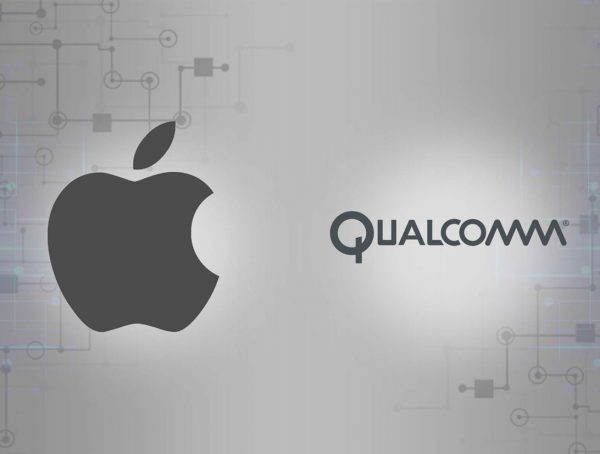
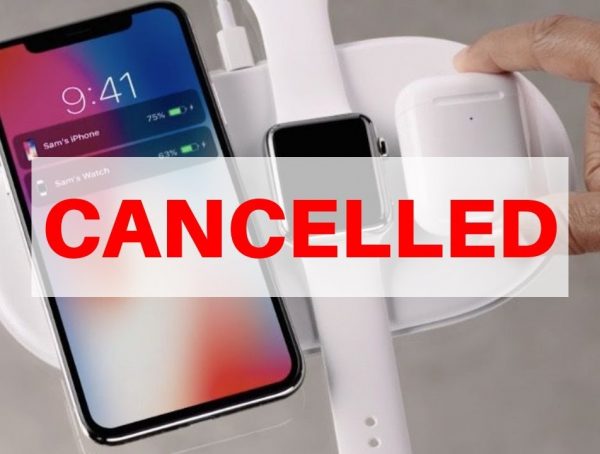
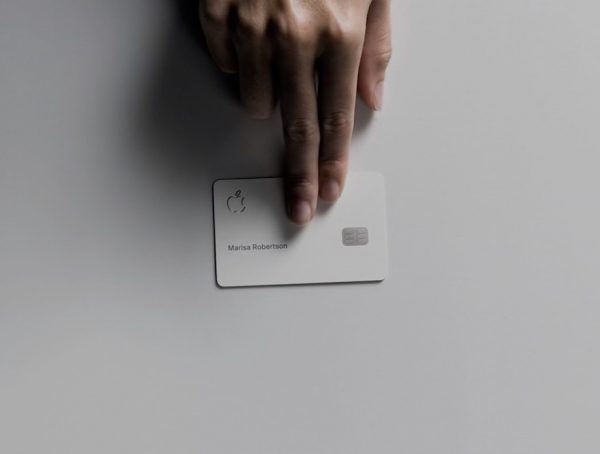
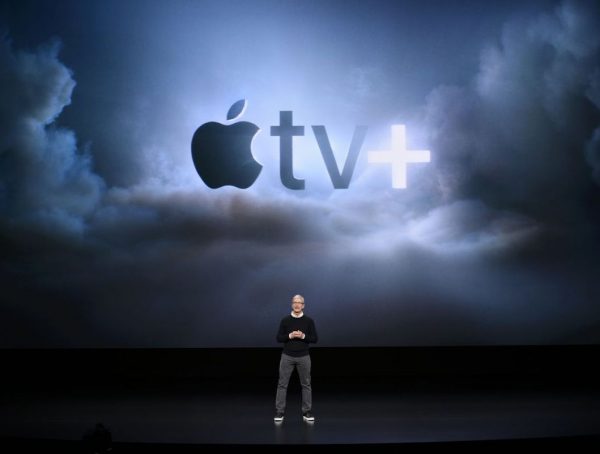
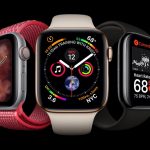
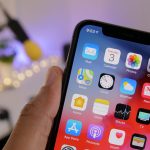
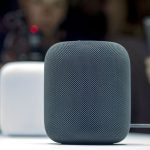
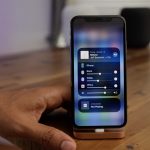
6 Comments
[…] This post was mentioned on Twitter by iPhoneHellas, K.Papamichalopoulos. K.Papamichalopoulos said: RT @iPhoneHellas: Steve Jobs και μία ομιλία που θα συζητηθεί πολύ: Ο Steve Jobs δεν συμμετέχει συχνά στις… http://goo.gl/fb/iGkAA […]
[…] Steve Jobs δήλωσε κατά τη διάρκεια του conference call χτες ότι το App Store έχει […]